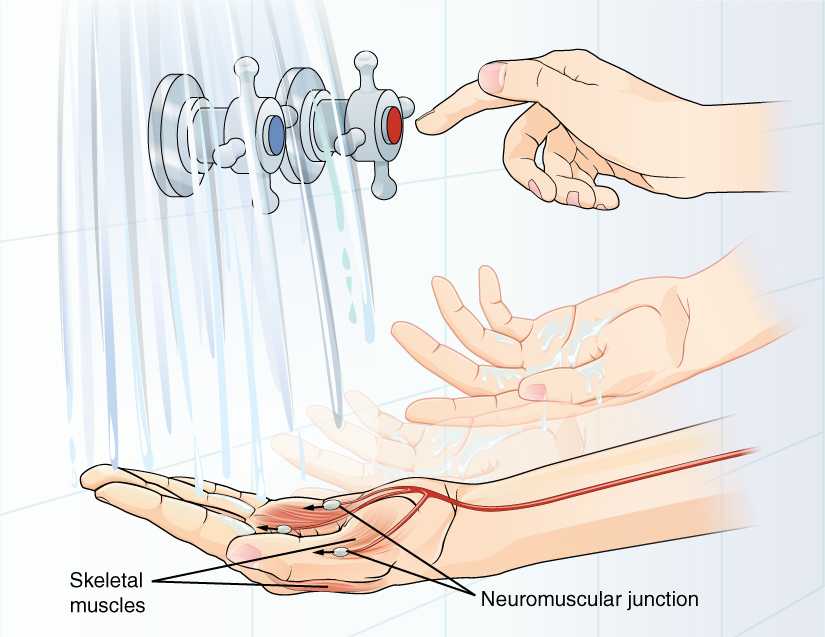Spinal Level Reflexes
Overview
- Onset: birth or earlier
- Integration: 1-2 months ( 2 exceptions)
There are 3 main types:
| Type of Reflex (Example) |
Number of Synapses | Stimulus for Reflex | Sensory Afferent Fibers | Responses |
|---|---|---|---|---|
| Stretch-reflex | 1 | Stretch (lengthening) of the muscle | Ia Contraction of the muscle | |
| Golgi tendon reflex (clasp knife) |
2 | Contraction (shortening) of the muscle | Ib | Relaxation of the muscle |
| Flexor-withdrawal reflex (touching a hot stove) |
Multiple | Pain; temperature | II, III, and IV | Ipsilateral flexion and contralateral extension |
Stretch-Reflex
Proprioceptive Placing
Timing
- Onset:
- UE: birth
- LE- 35 weeks gestational age
- Integration: 2 months
Testing
- Test position: Hold infant vertical
- Test procedure: Brush dorsum of hand/foot against table
- Positive response: Lifts hand/foot on table
- Negative response: Hand/foot remains relaxed
Significance
- Significance: precursor to hand/food placement in activities
- Foot placing is elicited by touching the shinbone and the dorsal side of the foot against a hard surface such as the edge of a table. The newborn makes a quick lifting motion, as if to step onto the table. This reaction is present between the 3rd and 6th month of age.
Flexor Withdrawal
Timing
Onset: 28 weeks GA Integration: 1-2 months
Testing
- Test position: supine , head in midline
- Test procedure: noxious stimulus to sole of foot
- Positive response: none or volitional withdrawal from stimulus
Significance
Significance: develops protective balance between flexor and extensor, persistence interferes with weight bearing and walking
Crossed Extension
Timing
- Onset : 28 weeks
- Integration: 1-2 months
Testing
- Test position: supine, test LE extend
- Test procedure: noxious stimulus to sole of foot
- Positive response: flexion of stimulated leg and then extension of oppo leg w adduction
- Negative response: no mvmt of flexed leg
Significance
- Persistence interferes with weight bearing and walking
Palmar grasp
Timing
- Onset: 28 wks GA-weak, 36 wks GA-full response
- Integration: 4-7 months
Testing
- Test position: Supine, head in midline
- Test procedure: Pressure on palm of hand
- Positive response: Fingers flex and grasp finger (baby can be lifted off surface)
- Negative response: Hand remains relaxed
Significance
- Signif: persistence interferes with volitional grasp and release
Plantar grasp
Timing
- Onset 28 weeks
- Integration 9 months
Testing
- Test position: supine, head in midline, LE relaxed
- Test procedure: supported standing on feet or pressure on sole of foot just distal to MT heads
- Positive response: flexion or curling of toes
- Negative response: toes remain relaxed
Significance
Persistence interferes w stance, balance and walking
References
1.
Costanzo LS. Costanzo Physiology. 7th ed. Elsevier; 2022.
2.
Betts JG, Blaker W. Openstax Anatomy and Physiology. 2nd ed. OpenStax; 2022. https://openstax.org/details/books/anatomy-and-physiology-2e/?Book%20details
Citation
For attribution, please cite this work as:
Yomogida N, Kerstein C. Spinal Level Reflexes.
https://yomokerst.com/The
Archive/Neuroscience/Neurophysiology/Reflex/Spinal Level
Reflexes/spinal_level_reflexes.html
